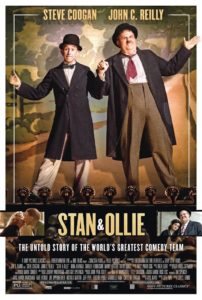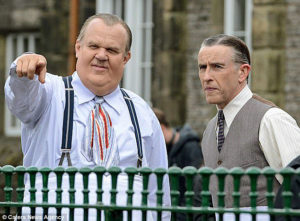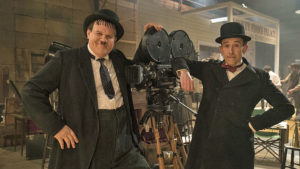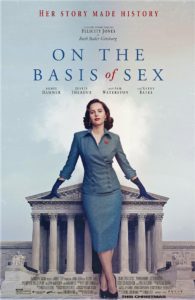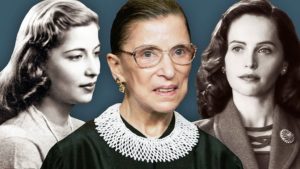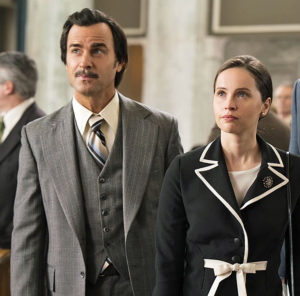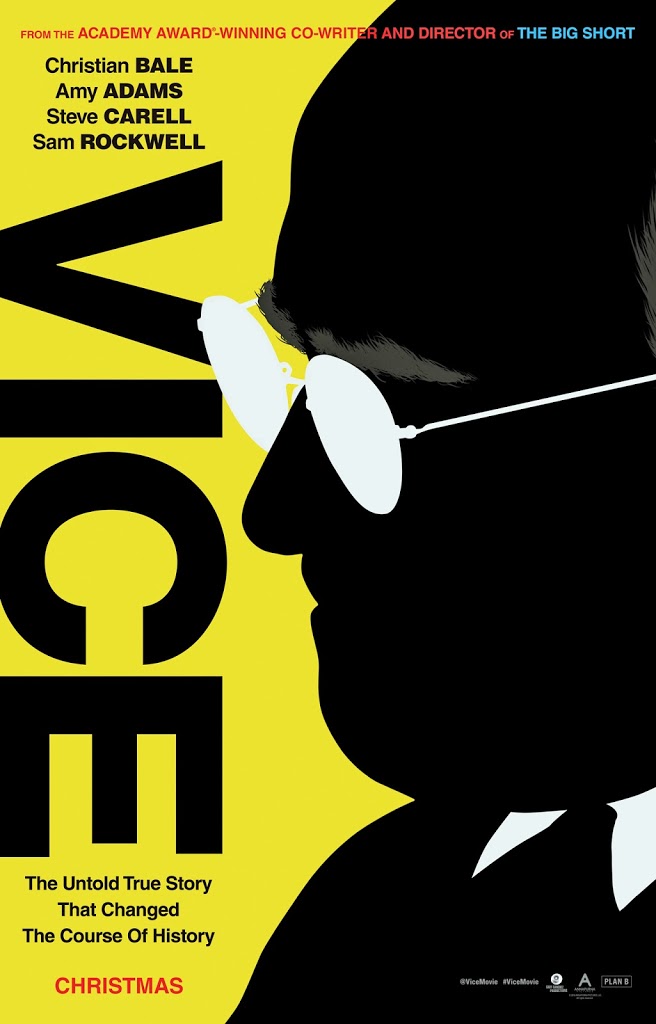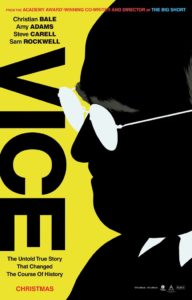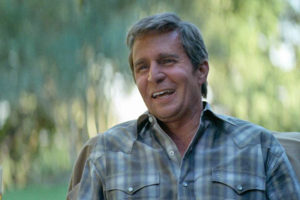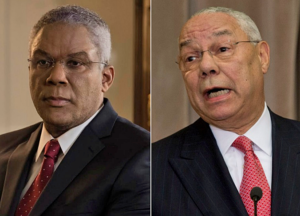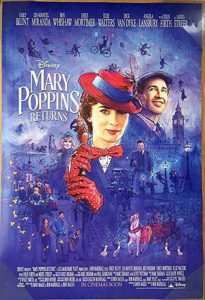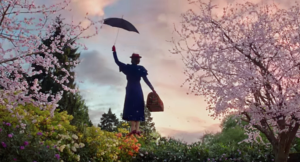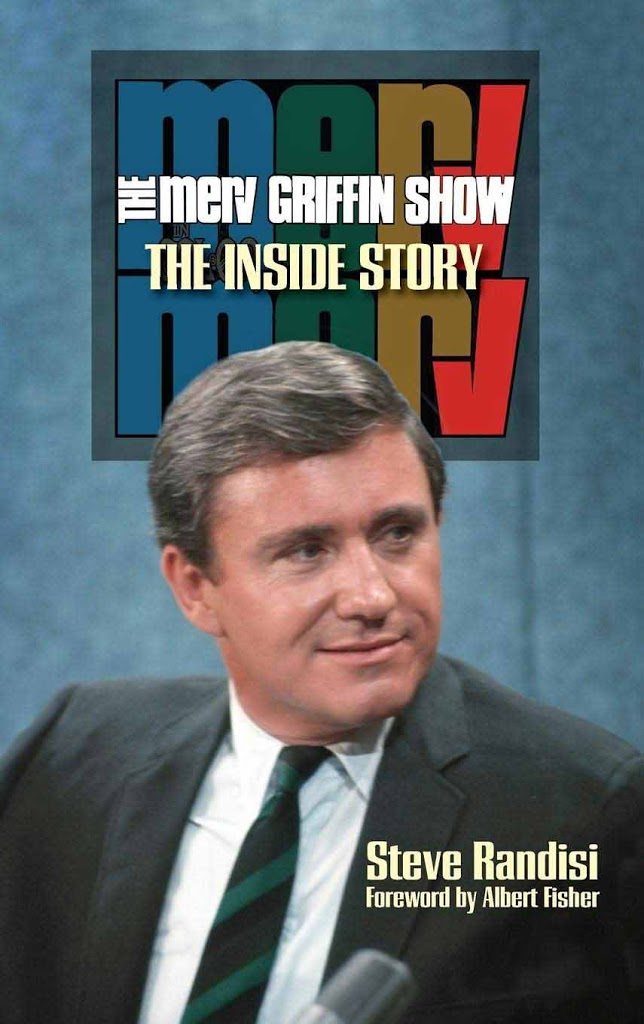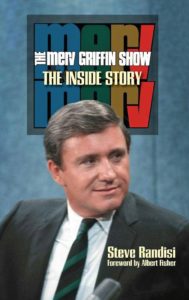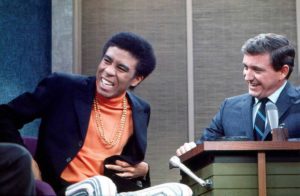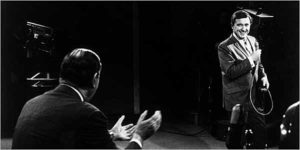Author: Steve Crum
Laurel & Hardy are given deserved homage in poignant, often hilarious ‘Stan & Ollie’
There is a brief but poignant scene in the wonderful Stan & Ollie wherein Stan Laurel (Steve Coogan) is walking along a London street in 1953. He passes a large movie poster pasted to a brick wall, and then backs up to give it closer attention. The film being advertised is Abbott and Costello Go to Mars, starring the then #1 comedy team in movies, Bud Abbott and Lou Costello. Stan sighs in deadpan, and walks away without comment. From 1921-51—and 106 comedy films, Stan Laurel and Oliver Hardy were undoubtedly THE funniest duo in motion pictures. It is a telling sequence, laced with sad irony of fleeting fame. The proverbial parade passes by.
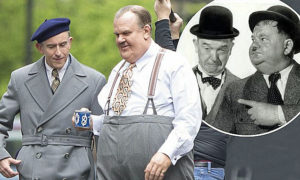 Stan & Ollie, which finally opens throughout the country today after premiering Dec. 28, is a warm and often hilarious biographical drama about Laurel and Hardy’s twilight years in show business. It involves “The Boys” and their exhaustive music hall tour of the United Kingdom and Ireland during 1953. This took place two years after making what amounted to be the worst film of their career, Utopia. It was the team’s final movie.
Stan & Ollie, which finally opens throughout the country today after premiering Dec. 28, is a warm and often hilarious biographical drama about Laurel and Hardy’s twilight years in show business. It involves “The Boys” and their exhaustive music hall tour of the United Kingdom and Ireland during 1953. This took place two years after making what amounted to be the worst film of their career, Utopia. It was the team’s final movie.
Their movie career virtually ended, The Boys had great plans for a movie comeback with a burlesque of Robin Hood. Stan had been working on a script for months when he and Ollie undertook their British tour. As such, there are flashbacks to some of their funniest movie moments in the feature, Way Out West, and the short, County Hospital. Each sequence is recreated spot-on, from duplicated sets to brilliant characterizations by John C. Reilly (as Oliver Hardy) and Steve Coogan (Stan Laurel).
It could not have been accomplished without stunning movie magic provided by a team of 20+ makeup gurus handling the prosthetics, as well as hair and teeth designs. Reilly’s transformation to Hardy is incredible.
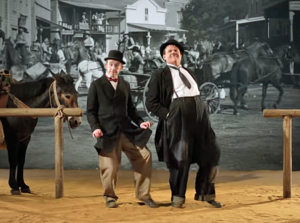 Directed by Jon S. Baird (his first theatrical feature of note) and written by Jeff Pope (Philhomena), Stan & Ollie begins in 1937, when Laurel and Hardy were at the peak of their careers at Hal Roach Studios. The duo dances to “At the Ball, That’s All” from Way Out West. During a break, the two grouse about Producer Roach’s hedging on a raise in their pay.
Directed by Jon S. Baird (his first theatrical feature of note) and written by Jeff Pope (Philhomena), Stan & Ollie begins in 1937, when Laurel and Hardy were at the peak of their careers at Hal Roach Studios. The duo dances to “At the Ball, That’s All” from Way Out West. During a break, the two grouse about Producer Roach’s hedging on a raise in their pay.
Cut to 16 years later in Newcastle, England. The duo are fresh off the ship, ready for a what turns out to be an overall successful, but physically taxing series of live stage appearances wherein they recreate some of their greatest movie comedy bits. Unfortunately, their manager/producer, Bernard Delfont (Rufus Jones), has been derelict in both their bookings and hotel accommodations.
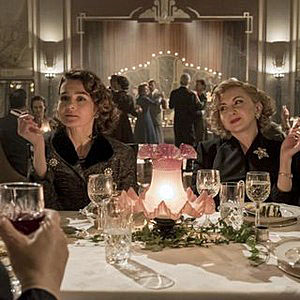 When Stan and Ollie’s wives join them on the tour, things get interesting. Both are wildly eccentric, and played with aplomb by Shirley Henderson as Lucille Hardy…whose voice sounds like a Munchkin; and Nina Arianda as Ida Kitaeva Laurel…possessing a heavy East European accent and sounding like Maria Ousepenskaya. Both are very protective of their husbands. All four together create an unique dynamic.
When Stan and Ollie’s wives join them on the tour, things get interesting. Both are wildly eccentric, and played with aplomb by Shirley Henderson as Lucille Hardy…whose voice sounds like a Munchkin; and Nina Arianda as Ida Kitaeva Laurel…possessing a heavy East European accent and sounding like Maria Ousepenskaya. Both are very protective of their husbands. All four together create an unique dynamic.
And then Ollie has a physical setback. So the movie proceeds in its mixture of hilarity and heartfelt love. It is a joy to experience.
As a 40 year member of The Sons of the Desert (the international Laurel and Hardy fan club), I feel that any movie based upon Stan and Ollie has to pass a credibility and likability test. This flick succeeds with Flying Deuces*…er, colors. (The Flying Deuces*, 1939, stars Laurel and Hardy.)
To play upon Mr. Hardy’s catchphrase, Stan & Ollie is quite the opposite of a mess The Boys have gotten us into.
=====
GRADE on an A-F Scale: A
Ruth Bader Ginsburg’s fight for gender equality heroically portrayed in ‘On the Basis of Sex’
On the Basis of Sex adds to the cadre of biographical films based upon U. S. Supreme Court Justices. That relatively short list includes 1950’s The Magnificent Yankee, starring Louis Calhern as Oliver Wendell Holmes. Among those that followed, two focused on Thurgood Marshall: Separate But Equal (1991—Sidney Poitier) and Marshall (2017—Chadwick Boseman).
That said, On the Basis of Sex is a fascinating, well crafted, accurate bio-drama about the early life—personal and professional—of Ruth Bader Ginsburg. Ginsburg has also been the focus of a fine documentary, RBG, which premiered last year on CNN. At this writing, 85 year-old Justice Ginsburg is recuperating from ill health while maintaining her senior status on the Supreme Court.
Directed by Mimi Leder (Pay it Forward), and written by Daniel Stiepleman, Basis follows Ginsburg’s early years (as Ruth Bader) with her parents, and then her eventual marriage to fellow law student Martin Ginsburg (Armie Hammer). Felicity Jones portrays RBG as a highly driven and aggressive law student. That verve would soon transition into a clever and relentless attorney.
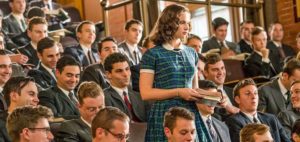 Basis paints RBG as a highly intelligent idealist possessing great stamina. Case in point: Soon after her marriage, husband Martin gets cancer, and is unable to attend classes. So in addition to taking her own full schedule, Ruth substitutes for Martin in his classes, taking copious notes used to prep him for exams. Describing such as an incredible feat is understatement.
Basis paints RBG as a highly intelligent idealist possessing great stamina. Case in point: Soon after her marriage, husband Martin gets cancer, and is unable to attend classes. So in addition to taking her own full schedule, Ruth substitutes for Martin in his classes, taking copious notes used to prep him for exams. Describing such as an incredible feat is understatement.
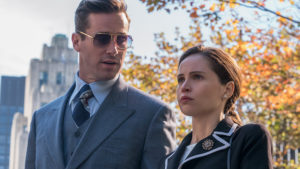 After transferring from Harvard to Columbia University, the Ginsburgs—now with a baby—complete their law degrees. Martin immediately finds an attorney position, but Ruth does not. Really, she is not permitted to do so. Law firms were male dominated. Period. This was in the late 1960s.
After transferring from Harvard to Columbia University, the Ginsburgs—now with a baby—complete their law degrees. Martin immediately finds an attorney position, but Ruth does not. Really, she is not permitted to do so. Law firms were male dominated. Period. This was in the late 1960s.
Ruth is relegated to teaching “The Law and Sex Discrimination” at Rutgers Law School. And she is lucky to get even that.
While On the Basis of Sex is by no means a rags to riches story, it does fit the mold of failure to success—or, to be accurate, obscurity to success and fame. It does not take long for the disappointed RBG to be offered a lawsuit that will propel her upward and onward into law book history. Since she represents no firm, Ginsburg enlists help from friend Mel Wulf (Justin Theroux), an ACLU attorney. The case involves a Denver man who hired a nurse to help care for his aging mom. Since he had to continue working, he could not take care of her himself. So he declared the payment to his mother’s nurse on his income tax. Then he butted head to head with the IRS, whose code limited any such tax deduction…for a man. It was justifiable for a woman to declare such, but not a man.
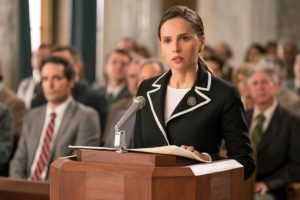 What occurs for the remainder of the film is reflected in the movie’s title. The beauty of On the Basis of Sex is its portrayal of Ginsburg’s almost single-handed pursuit of justice for men AND women. Gender discrimination becomes the mainstay of Ginsburg’s case, which she argues pro bono.
What occurs for the remainder of the film is reflected in the movie’s title. The beauty of On the Basis of Sex is its portrayal of Ginsburg’s almost single-handed pursuit of justice for men AND women. Gender discrimination becomes the mainstay of Ginsburg’s case, which she argues pro bono.
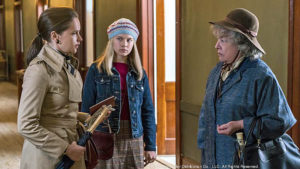 Aside from the courtroom scenes, there are welcome castings of Kathy Bates (as women’s rights attorney Dorothy Kenyon) and Sam Waterston as Erwin Griswold, a Harvard Law School administrator who eventually represents the IRS in court vs Ginsburg.
Aside from the courtroom scenes, there are welcome castings of Kathy Bates (as women’s rights attorney Dorothy Kenyon) and Sam Waterston as Erwin Griswold, a Harvard Law School administrator who eventually represents the IRS in court vs Ginsburg.
Look for a surprise cameo near the film’s end. Then again, it will probably not be so surprising.
=====
GRADE on an A-F Scale: B+
Dick Cheney’s skewed political life realized in Adam McKay’s biting ‘Vice’
If not ironic, it is curious that Vice opens Christmas Day. It is anything but a family movie, or even lighthearted escapism. However, it IS a comedy of a very dark kind. The laughs are inward, and often make one cringe. That a fact-based movie about a power hungry politician from 2001-09 could be released in the midst of the currently controversial presidential term positively speaks to the tenets of our Constitution. Such is Adam McKay’s dramedy, Vice. McKay wrote, produced and directed it.
The movie’s focus is on Richard Bruce Cheney, whom the world knows as Dick Cheney, the 46th Vice President of the United States, under President George W. Bush. The film’s title references Cheney’s vice presidency as well as Merriam-Webster’s definition of vice: “moral depravity or corruption; wickedness.”
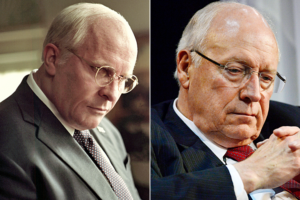 McKay’s credentials include Will Ferrell comedies (including both Anchorman films), The Big Short, and serving as head writer on Saturday Night Live. This time, it is not Ferrell masquerading as George W. Bush, but Sam Rockwell…and he nails it. Portraying VP Cheney is Oscar winner Christian Bale. So dedicated to acting his part, he gained 40 pounds. Thanks to studying Cheney’s speech patterns and mannerisms, Bale’s transformation is incredibly uncanny and stunning. This is far from an Alec Baldwin burlesque of Donald Trump—funny as that is.
McKay’s credentials include Will Ferrell comedies (including both Anchorman films), The Big Short, and serving as head writer on Saturday Night Live. This time, it is not Ferrell masquerading as George W. Bush, but Sam Rockwell…and he nails it. Portraying VP Cheney is Oscar winner Christian Bale. So dedicated to acting his part, he gained 40 pounds. Thanks to studying Cheney’s speech patterns and mannerisms, Bale’s transformation is incredibly uncanny and stunning. This is far from an Alec Baldwin burlesque of Donald Trump—funny as that is.
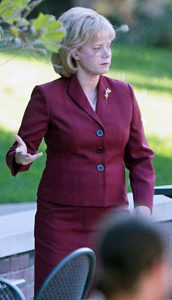 Just as immersed in her role as Cheney’s wife, Lynne, is Amy Adams. She is terrific, and her character is central to the Dick Cheney story.
Just as immersed in her role as Cheney’s wife, Lynne, is Amy Adams. She is terrific, and her character is central to the Dick Cheney story.
After the Nebraska born Dick Cheney moves with his parents to Casper, Wyoming, it is apparent he is more interested in socializing than his studies. By the time he struggles to graduate from high school, his time is spent hanging out at local taverns and engaging in bar fights. One of his two arrests for DWI is depicted not long into the film. A couple of years later, he marries his childhood sweetheart, Lynne.
Lynne has aspirations for power through politics, and applies them to her misguided husband. Realizing that men have a better chance to succeed in politics than women (at least then it was true), Lynne will vicariously guide her husband to greatness. She is essentially the puppeteer. And so it goes, as Dick Cheney rapidly climbs political rungs that reach the Oval Office of George W. Bush. By now, Dick himself believes his savvy and superiority, taking every opportunity to sidestep Bush in secret.
According to Vice, it is an easy ruse. He uses Defense Secretary Donald Rumsfeld (Steve Carell) to circumvent Bush’s power whenever and however he can for his own purposes. Cheney’s grab for presidential power during the 9-11 attacks and the aftermath shock Colin Powell (Tyler Perry) and Condoleezza Rice (LisaGay Hamilton), but not the dense Bush. Back home, Lynne remains her spouse’s confidant-adviser.
Was Dick Cheney really a ghost president to George W. Bush? Did Cheney really move our country to an Iraq War in search of non-existent chemical weapons? Vice answers yes to both questions.
 The film’s visuals and details are so honest, clarifying and precise that at times it seems we are viewing a Frederic Wiseman documentary. The Cheney years are history, and not that long ago.
The film’s visuals and details are so honest, clarifying and precise that at times it seems we are viewing a Frederic Wiseman documentary. The Cheney years are history, and not that long ago.
=====
GRADE on an A-F Scale: B+
‘Mary Poppins Returns’ shines as sequel to Disney’s 1964 classic
Undoubtedly THE family movie of 2018, Mary Poppins Returns is a joyous, exuberant musical that is banking on a legion of fans of 1964’s Mary Poppins. This is not to say that those young or old, who have never seen the first Poppins, will be lost with this one. However, it would help immensely if they have.
There are grandparents—like yours truly—who did see and greatly enjoy Disney’s first take over 50 years ago. Since then, there have been reissues at theaters, followed by releases on VHS and then DVD formats. Also factor in the numerous times Mary Poppins has been shown as a network TV special. By now, most children have seen it, right? It remains in the same league of beloved family movies as The Wizard of Oz. Come we now to the new Poppins film.
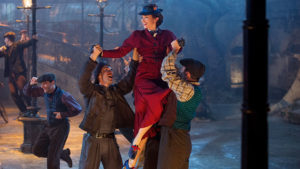 Touted as a sequel, Mary Poppins Returns is more aptly both a sequel and a re-imagined remake of the 1964 Disney classic. Frankly, there are more similarities than differences. Director/Producer/Co-Story Writer Rob Marshall has fashioned Returns within the same template, including at least three of the same characters. The first film’s house and neighborhood have barely aged, except for the once very young Jane and Michael Banks. They are now adults. Michael (Ben Whishaw) is recently widowed, and has three young kiddos. Sister Jane (Emily Mortimer) has returned to the family home to help Michael and the children deal with their loss.
Touted as a sequel, Mary Poppins Returns is more aptly both a sequel and a re-imagined remake of the 1964 Disney classic. Frankly, there are more similarities than differences. Director/Producer/Co-Story Writer Rob Marshall has fashioned Returns within the same template, including at least three of the same characters. The first film’s house and neighborhood have barely aged, except for the once very young Jane and Michael Banks. They are now adults. Michael (Ben Whishaw) is recently widowed, and has three young kiddos. Sister Jane (Emily Mortimer) has returned to the family home to help Michael and the children deal with their loss.
The elder Mr. and Mrs. Banks of the first movie have evidently died some time ago.
The very bank for which the late Mr. Banks worked, the Fidelity Fiduciary, is now run by the villain of Mary Poppins Returns, William Wilkins (Colin Firth in conniving mode). He has schemed to foreclose on the Banks’ home immediately.
 Enter Mary Poppins, descending from the sky via open umbrella—just as she did in the ’64 movie. But this time she is impressively portrayed by Emily Blunt. Blunt’s singing voice, and she does sing several numbers, is not in Julie Andrews’ league, but it is more than acceptable. Mary then enters the Banks household as a nanny and fixer, intent on winning over the Banks family with words and songs of hope and happiness. She is soon assisted by Jack the lamplighter (Lin-Manuel Miranda), who apprenticed with Bert from the original film. (Bert is nowhere to be seen.)
Enter Mary Poppins, descending from the sky via open umbrella—just as she did in the ’64 movie. But this time she is impressively portrayed by Emily Blunt. Blunt’s singing voice, and she does sing several numbers, is not in Julie Andrews’ league, but it is more than acceptable. Mary then enters the Banks household as a nanny and fixer, intent on winning over the Banks family with words and songs of hope and happiness. She is soon assisted by Jack the lamplighter (Lin-Manuel Miranda), who apprenticed with Bert from the original film. (Bert is nowhere to be seen.)
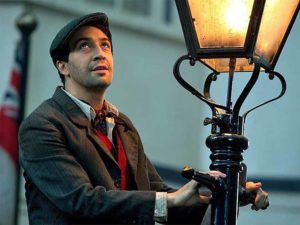 As with Mary and Bert in the first flick, Mary and Jack undergo adventures in ultra-colorful live action and animated lands, including an inventive sequence that begins through a bubble bath drain. This is cued by one of the film’s best songs, Can You Imagine That? Other singable songs are “The Place Where Lost Things Go” and “Trip a Little Light Fantastic.” The score also includes snatches of music and songs written by the Sherman Brothers for Mary Poppins.
As with Mary and Bert in the first flick, Mary and Jack undergo adventures in ultra-colorful live action and animated lands, including an inventive sequence that begins through a bubble bath drain. This is cued by one of the film’s best songs, Can You Imagine That? Other singable songs are “The Place Where Lost Things Go” and “Trip a Little Light Fantastic.” The score also includes snatches of music and songs written by the Sherman Brothers for Mary Poppins.
 There are many pluses gained in this new version, including Meryl Streep’s eccentric Topsy, Mary’s orange-haired cousin who frequently turns everything around her upside-down. There is Angela Lansbury’s Balloon Lady, featured in a grand finale. And there is Dick Van Dyke as Mr. Dawes Jr., the bank chairman. (Van Dyke played Dawes Sr. in the original.) The 93 year-old not only sings, but dances…on a desktop.
There are many pluses gained in this new version, including Meryl Streep’s eccentric Topsy, Mary’s orange-haired cousin who frequently turns everything around her upside-down. There is Angela Lansbury’s Balloon Lady, featured in a grand finale. And there is Dick Van Dyke as Mr. Dawes Jr., the bank chairman. (Van Dyke played Dawes Sr. in the original.) The 93 year-old not only sings, but dances…on a desktop.
In addition, Emily Blunt and Lin-Manuel Miranda are practically and perfectly cast.
 David Magee’s screenplay would no doubt be as unacceptable to Mary Poppins author P. L. Travers as she was regarding Don DaGradi and Bill Walsh’s in 1964. She just did not like the addition of singing, dancing, and animation.
David Magee’s screenplay would no doubt be as unacceptable to Mary Poppins author P. L. Travers as she was regarding Don DaGradi and Bill Walsh’s in 1964. She just did not like the addition of singing, dancing, and animation.
Robert and Richard Sherman’s very singable score for the ’64 version is unmatched by Marc Shaiman and Scott Wittman’s 2018 take. Did I leave the theater humming a Mary Poppins Returns song? No. (I did so in 1964.)
Then again, Mary Poppins Returns is brimming with what we need more than ever today: love, hope, and family unity.
——————————
GRADE on an A-F Scale: B+
‘The Merv Griffin Show’—with all its showbiz trappings—realized by author Steve Randisi
Fans of the long running TV talk/variety program, The Merv Griffin Show, will love the aptly titled The Merv Griffin Show: The Inside Story. I am one of those fans. So is Steve Randisi, who has written a well researched, revealing, and vastly entertaining work about the evolution of the Griffin TV show over its 22 years on the air, 1962-86. Covered in some detail is the life of Griffin himself, on and off stage.
In the preface, Randisi explains the scope of his writing: “This book is not a full-scale biography of Merv Griffin. Rather, it’s the story of the television program bearing his name.” Still, there is a ton of fascinating information about Griffin’s personal and professional life before and after the TV series that bore his name.
We learn of Griffin’s early showbiz days in the 1940s as “America’s Mystery Voice” singer on local radio, and how his excessive body poundage per se “weighed in” to his fledgling career. Covered are his big band singer days with Freddy Martin, and Merv’s hit song, “I’ve Got a Lovely Bunch of Coconuts.”
There is more than passing mention of Griffin’s penchant for creating and producing TV game shows, a period within his resume that began with his hosting of Goodson-Todman’s Play Your Hunch in 1958. Soon he was producing his own game shows, notably Jeopardy and Wheel of Fortune. Griffin was even composing their theme music.
But the meat of Randisi’s book is The Merv Griffin Show, and its development and journey from network(s) to syndication. His professional and personal relationship with Johnny Carson is explored in some detail—appropriate considering Carson’s Tonight Show was Merv’s most formidable ratings opponent.
I particularly enjoyed reading of Arthur Treacher’s tenure on Merv’s show, from being personally chosen as the announcer/sidekick, to his interactions with Merv and his guests.
 Included are backstage vignettes about tardy or absent guests, including a few big names reluctant to go on at the last minute. There are stories about Jack Paar, who influenced Merv’s talk show style, and Jean Arthur, Dr. Martin Luther King, Bobby Kennedy, Joey Bishop, Eva Gabor, Mike Douglas, Dick Gregory, Richard Pryor, George Carlin, and a slew more. They all were guests on Merv’s show, some repeatedly.
Included are backstage vignettes about tardy or absent guests, including a few big names reluctant to go on at the last minute. There are stories about Jack Paar, who influenced Merv’s talk show style, and Jean Arthur, Dr. Martin Luther King, Bobby Kennedy, Joey Bishop, Eva Gabor, Mike Douglas, Dick Gregory, Richard Pryor, George Carlin, and a slew more. They all were guests on Merv’s show, some repeatedly.
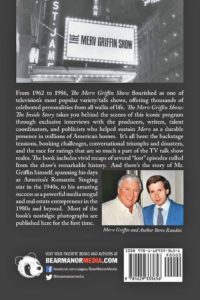 The book’s 420 pages end with a helpful index—in case one seeks specific references regarding dozens of names ranging from Orson Welles to Abbie Hoffman to Joan Crawford, and beyond. Fifty-nine rarely seen photos are icing on this enticing cake.
The book’s 420 pages end with a helpful index—in case one seeks specific references regarding dozens of names ranging from Orson Welles to Abbie Hoffman to Joan Crawford, and beyond. Fifty-nine rarely seen photos are icing on this enticing cake.
Randisi’s book is a fine tribute to Merv Griffin and his long running talk show. As well, it serves as an anecdotal history of mid to latter 20th Century show business.
——-
GRADE on an A-F Scale: A
——-
The book is available in both hardback and softback via Bear Manor Media.


